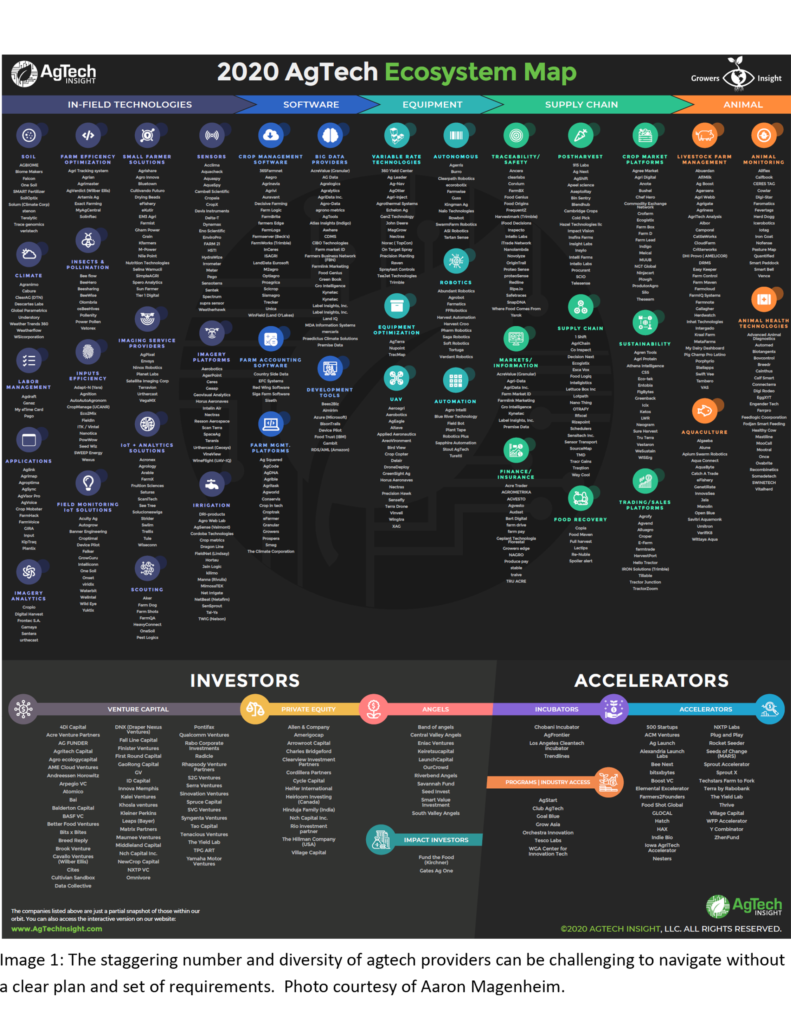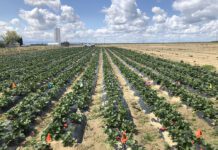Do you sometimes feel like we are living in two alternate realities when it comes to ag technology? Does it seem hard to reconcile your daily experiences with the advanced vision of farming portrayed in commercials and trade shows? On the tech-enabled farm, every employee is recording helpful observations on their smartphone for later analysis. Automated equipment is precisely applying biological pesticides, and irrigation schedules have been calculated and executed to perfectly match crop demand. Obviously, this results in ever-increasing yields and profitability.
The reality you encounter each day out on the ranch, however, is much different. You step out of the pickup and walk into a chronically underperforming field. You can tell the yield is off again this season, but there is no data readily available to compare what you did this season to whatever produced your high yield three years ago.
Your workforce is stretched thin and spray applications are rarely completed on time, so you increase rates and add materials or follow-up sprays to compensate for poor performance. Irrigation scheduling in your world is frantically trying to complete a round of watering fast enough to start again before the leaves begin wilting. In the end, you usually eke out a modest profit, but you aren’t setting any records and are worried about rising water costs and having enough capital to redevelop aging orchards.
At this point, the three most relevant questions a grower must ask are:
Do I really need to improve my operation?
What areas of my operation should I focus on?
Which ag tech tools will get me there?
If You’re Not Moving Forward, You’re Falling Behind
As you evaluate the current state of ag tech, you will no doubt encounter a lot of hype. Each year, venture capital funds and investors, often with little knowledge of the agriculture industry, dump billions of dollars into ag tech startups. Some of these technologies and companies will not become commercially viable, and examples of these are abundant.

But many are proving successful, and growers, even internationally in competitive markets, are leveraging technology to their advantage. Aaron Magenheim, CEO and co-founder of Growers Insight, regularly consults with tree nut growers on technology planning and implementation, and keeps a close eye on the ag tech “ecosystem” and commodity markets around the globe. He feels strongly that American growers must recognize the increasing market pressure from international competitors and continue to invest in technology and infrastructure.
“In other countries, governments work a lot closer with their private sector, and that includes investing in technology and trade,” he said.
As international governments and private companies cooperatively invest in ag tech, they become stronger competitors in the global market. Do not let past success or familiar practices lull you into complacency in a shifting global economy. Continuously look for opportunities to improve and the right technologies to assist in that process in order to remain competitive.
Setting a Target
If you believe there is a need for improvement on your farm, before investing in any technology, you must begin with setting some goals. The key to this process is first starting with the long-term goals of your business. Where do you need to be in terms of profitability and what level of total production is required, considering the range of nut prices in recent years? What hurdles could prevent you from reaching those goals? Are your major issues rising labor and input costs? What changes would you have to make to manage those and achieve your goals? Make the goals as clear as possible so that you can develop a step-by-step implementation plan to meet that goal. If you identify the types of technology you need to find, list basic requirements and set a budget for the initial and ongoing investment.
This kind of long-term planning can be challenging. There may be attainable goals for your business that you don’t even realize are possible. Perhaps you need to look outside of your business to see other opportunities for change.
“The big challenge is that people don’t take the time to understand the possibilities that are out there, how other people have solved similar problems, and then what their operation looks like in the future,” Magenheim said.
Your goals should be specific and achievable, but avoid aiming too small when you set them. Try visiting other regions or countries with similar crops, or ask a technology consultant for help. It is alright that you don’t have all the answers. If you are committed to being in business for the long haul, then taking the time to investigate, dream and set realistic goals and implementation plans for your business is worth it.
Hitting the Mark
Finally, and only after you are convinced your operation needs to advance, after you set an ambitious but achievable goal and develop a stepwise implementation plan should you now invest in technology to help you get there. Even this stage of the process can be daunting, but use your plan to guide you to the right technology and partners. Magenheim compares the process to trying to navigate to a distant location without using a map.
“If you don’t have a plan showing the two best ways to get there, you’re going to take 15 different backroads that dump you out into the middle of nowhere, run into dead ends and backtrack.” If you have a set of goals, an implementation plan with basic technology requirements and a budget, it will help you navigate the plethora of technology options.
Furthermore, just because your long-term business goals and technology requirements are ambitious, it does not mean that you cannot start small. Sometimes, it is best to walk before you run, which in ag tech can prevent you from overwhelming your employees and making investments you later regret.
Take, for example, finding basic software to accurately and easily track costs on a field-by-field basis. You and each employee can quickly jot a digital note to record every spray, irrigation event, tree training or cultivation that happens. Although it may not appear to revolutionize your operation, it may actually help you identify problems you were unaware of and opportunities for improvement.
Magenheim often observes that, “Few growers try to figure out budgets versus actuals. So, as long as they are relatively close at the end of the year on the whole budget, it doesn’t matter if they spent double what they thought on this field and half on that field. But what is the point of putting a budget together and how do you know where to improve?” An annual spend of a couple hundred dollars for activity and cost-tracking software could help you identify thousands being lost by equipment downtime, employee performance disparities, irrigation scheduling problems or product procurement issues.
Building on Success
This kind of technology can add further value as it guides you to and helps you evaluate the performance of subsequent ag tech investments. The newly implemented technology and practices can be measured against your previous methods because you have baseline financial data for comparison. As the management consultant Peter Drucker famously stated, “If you can’t measure it, you can’t improve it.”
By setting ambitious business goals, stepwise plans to achieve them, and starting with small, manageable technology steps toward those goals, you will be able to achieve successes and build upon them. A few successful implementations under your belt will give you greater clarity and confidence that your business goals and technology roadmap are leading you in the right direction. Before long, you may find that your farm is that “farm of the future” that seemed so far from reality.















